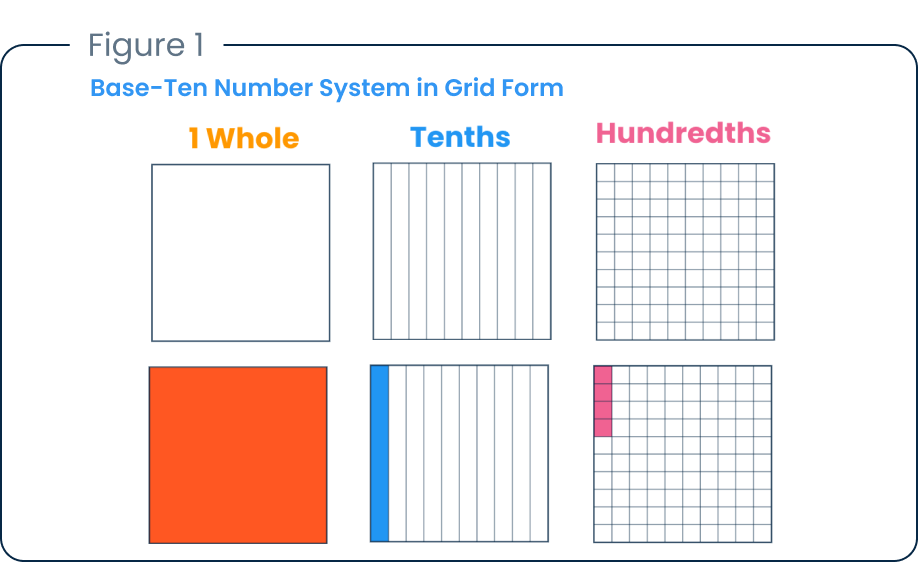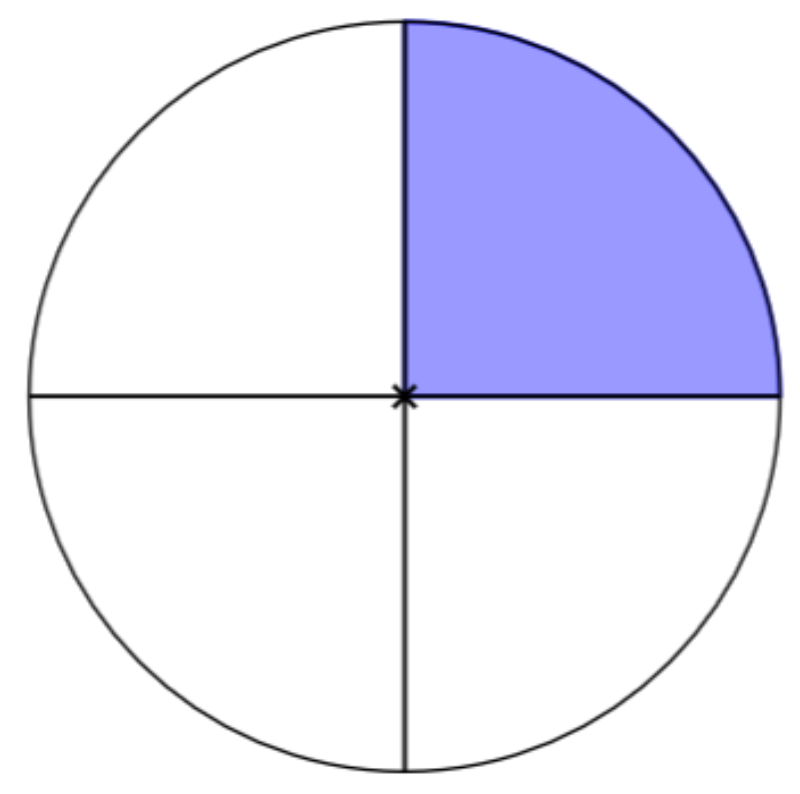Write a fraction equivalent to 3/4.
Answer: 6/8
To make an equivalent fraction, multiply the numerator and denominator by the same number.
3 x 2 = 6
4 x 2 = 8
3/4 = 6/8
What is the place value of the underlined number?
547
Answer: Tens
Expanding the number will help you determine what place the number is in.
500 + 40 + 7
40 is in the tens place, therefore the place value is 10.
Write this number in expanded form.
456 875
Answer:
400 000 + 50 000 + 6 000 + 800 + 70 + 5
In this number, 6 tens is equivalent to how many ones?
4,568
Answer:
6 tens is equivalent to 60 ones.

10 ones make 1 ten. If we multiply 6 tens by 10, we get 60 ones.
Give an example of a benchmark you would use to help you compare fractions.
Answer:
Looking at the numerators, looking at the denominators, using a benchmark such as 1/2.
What is the place value of the underlined number?
1.547
Answer: Hundreths
The number before the decimal represents the whole. Therefore, the number after will be in the tenths place, then the hundredths place, and so on.
How many ones make up a whole?
Answer: 100
![]()
10 tens make a whole, and 10 ones make a ten. Therefore, 10 x 10 = 100, which is a whole.
Which fraction is greater? 1/4 or 2/5?
Answer: 2/5
The parts in 1/4 are larger than in 2/5 because the whole is divided into less parts. Therefore, 1/4 is further away from the whole than 2/5 because the missing parts are greater.
How do you say the following number?
1.234
Answer: One and two hundred thirty-four thousandths.
- The whole number part is read normally.
- The decimal point is read as "and".
- The digits after the decimal are read as a whole number, followed by the place value of the last digit (in this case, thousandths).
Which benchmark would you use to help you solve which fraction is greater?
5/10 and 2/10
Answer: Look at the numerator
Since the denominators are the same, look at the numerator to determine which is greater. In this case, it is 5/10
Which fraction is smaller?
5/10 or 7/14?
Answer: They are equal.
That was a trick question. 5/10 is equal to half, and 7/14 is also equal to half. Therefore, they are both equal.
Put the following decimal in a place-value chart.
1.034
Answer:
Ones | Tenths | Hundredths | Thousandths |
1 0 3 4
Write a decimal number based on the following criteria:
1. Decimal is between 2 and 3
2. No hundredths
3. Tenths is between 3 and 4
4. Thousandths can have any number
Answer: There can be many different numbers. A Here's an example:
2.308
Order these fractions from least to greatest:
3/4, 1/4, 1/2
Answer: 1/4, 1/2, and 3/4
We know that 1/2 is half, so it is going to be in the middle.
1/4 and 3/4 have the same denominator, so we can look at the numerators and compare. 3/4 is greater than 1/4, so the order will be 1/4, 1/2, and 3/4.
Write a decimal based on this image:

Answer: 1.14
We have 1 whole shaded, so we know our decimal will start with 1.
We have 1 tenth shaded, so we know we will have a 1 in our tenths place.
We have 4 hundredths shaded, so we know we will have 4 in our hundredths place.
What mixed number is represented in this image?

Answer: 1 42/100
We have 1 fully shaded square, so we know we have 1 whole.
In the second square, we have 42 parts shaded out of 100 parts, so our fraction will be 42/100.
Put the following in a place value chart:
324.213
Answer:
Hundreds|Tens|Ones|Tenths|Hundredths|Thousandths|
3 2 4 2 1 3
Write a decimal based on this image:

Answer: 0.28
We have no wholes, therefore there will be a 0 in the ones place.
We have 2 tenths, so there will be a 2 in the tenths place.
We have 8 hundredths, so there will be an 8 in the hundredths place.
Write the following decimal in expanded form:
4.506
Answer:
4 + 0.5 + 0.006
We have 4 in the ones place, so we will write it as 4.
We have 5 in the tenths place, so we will write it as 0.5.
We do not have any hundredths, so we do not need to write anything.
We have 6 in the thousandths place, so we will write it as 0.006
Order the following fractions from greatest to least:
5/6, 1 1/2, 7/8, 3/4
Answer:
1 1/2, 7/8, 5/6, 3/4
1 1/2 is a mixed number, which means we have a whole. Therefore it will be the greatest.
Look at the denominators for 7/8, 5/6, and 3/4. The denominators will tell you have many parts each fraction is divided into. The smaller the number, the bigger each part.
7/8 is divided into the most parts, so each piece will be smaller. Therefore it will be the second greatest because there is only a small piece left to complete the whole.
5/6 is divided into the second most parts, so it will be third greatest.
3/4 is divided into the least amount of parts, so each part will be bigger. Therefore, the missing part is going to be larger, making it further from the whole.

